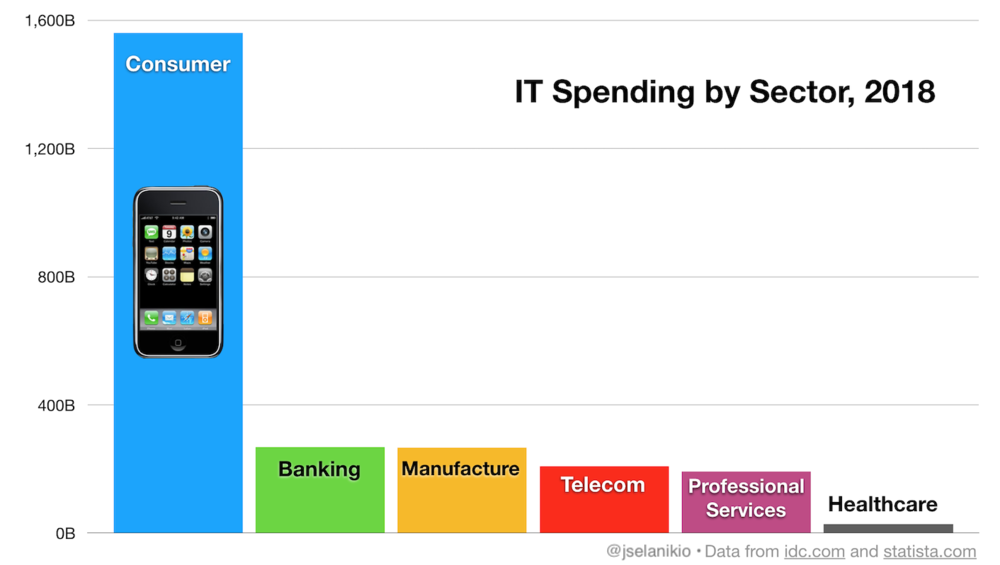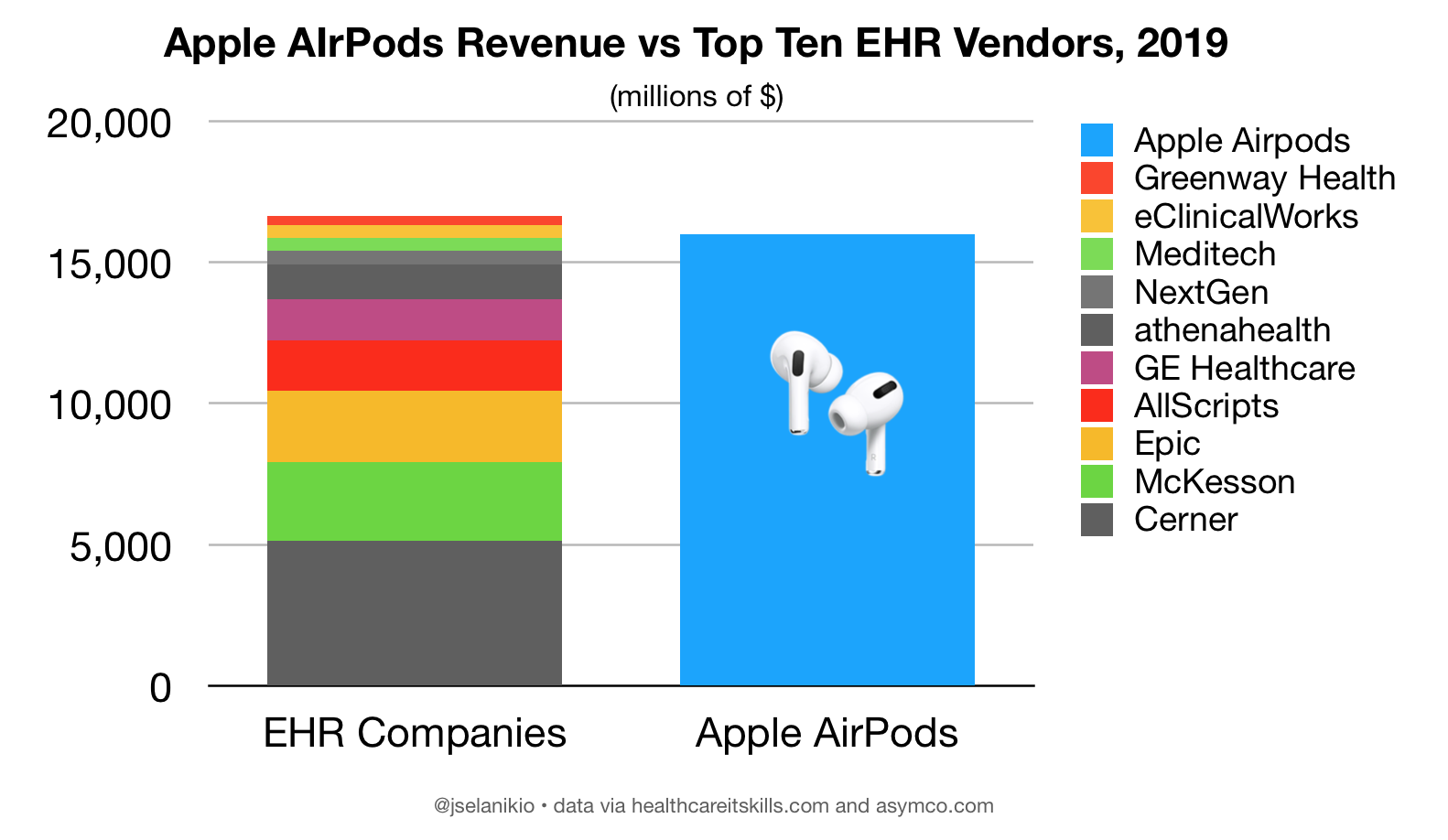Consumerization Hits Health, in a Big Way
Tech consumerization is on display this week at CES 2020 in Las Vegas — with almost 200,000 attendees, and more than 300 sessions over 4 days.
Consumerization has very definitely come to dominate the tech landscape.
But those of us working in healthcare, while often excited by consumer health developments, have a weirdly distorted view of our place in this tech world. When I ask attendees at my talks, and colleagues at my hospital where healthcare IT spending fits in the broader world, I never get an answer that remotely resembles reality.
When I ask what are the dominant companies in health technology, I get a list of top EHR vendors.
But consider this graph of IT spending by sector:
If you look too quickly, you might just miss the healthcare bar on the far right — because the less than $50 billion spent on IT in the healthcare industry (including on Epic and Cerner and other EHRs), already a laggard compared to other industries, is left in the dust by the roughly $1.5 TRILLION spent worldwide on consumer IT products (including mobile phones and, increasingly, wearables).
To really appreciate where health IT sits in this world, consider that as of 2019 Apple makes about as much money selling AirPods — potentially a potent health-monitoring technology itself —as the top ten EHR vendors combined (about $16 billion annually):
In a coming post, I’ll explore what this explosion of consumer technology, including AirPods, means for health technology, including the application of AI to health.

